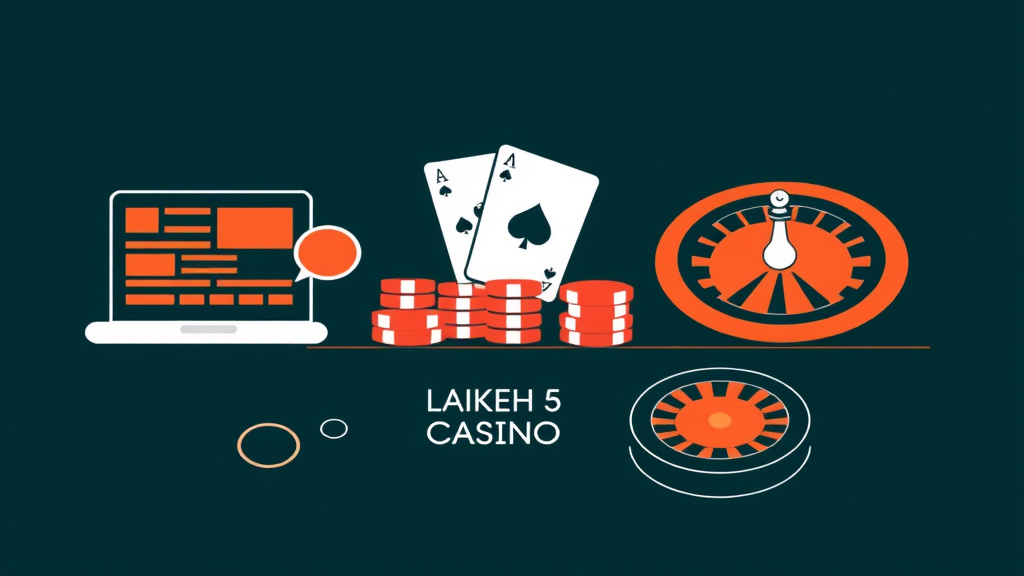manga us has quietly but profoundly shifted the landscape of American entertainment, blending Japanese art and storytelling with the diverse tastes of the US audience. As manga gains popularity across age groups and demographics, its influence extends beyond mere comic books, becoming a significant cultural phenomenon that impacts fashion, language, conventions, and social interactions. This article explores the journey of manga us in America—from its rise in popularity, cultural implications, distribution strategies, artistic styles, community engagement, and future trends—highlighting how Japanese manga has seamlessly integrated into American pop culture.
The Rise of Manga in the US Market: Trends and Demographics
The growth of manga us in the United States over the past two decades illustrates a remarkable shift in consumption patterns and cultural openness. Initially considered niche, manga's popularity surged in the early 2000s, driven by the accessibility of anime adaptations, online communities, and dedicated manga publishing houses. Today, manga appeals to a broad demographic that includes children, teenagers, and adults, with many series exploring complex themes, nuanced characters, and diverse genres that are seldom seen in traditional Western comics.
Demographically, manga us has broken stereotypes associated with comics and graphic novels. It attracts a diverse fanbase encompassing different genders, ethnicities, and socio-economic backgrounds, which is a testament to the universality of its stories. According to recent surveys, American readers increasingly prefer manga over classic Western comic books because of its unique artistic style and its ability to tackle real-world issues with depth and sensitivity. This trend underscores a cultural shift where Japanese manga is no longer seen as a foreign curiosity but as an integral part of everyday entertainment, fostering cross-cultural appreciation and understanding.
 Hình minh họa: manga us – read manga online app
Hình minh họa: manga us – read manga online appUnderstanding Manga's Cultural Impact on American Pop Culture
Manga us has significantly impacted American pop culture by influencing fashion, slang, and even social behaviors. Iconic manga characters and themes have infiltrated fashion trends—think of streetwear brands incorporating manga-inspired designs or cosplayers emulating popular characters at conventions. These influences extend beyond the covers of comics, becoming staples in visual storytelling and youth culture, creating a shared language of expression among fans.
Moreover, manga us has altered narrative expectations within American storytelling mediums. Its emphasis on character development, emotional depth, and serialized storytelling has influenced American comics and TV shows, encouraging creators to explore darker themes, complex characters, and serialized plots. This cultural integration exemplifies how manga us has helped democratize storytelling, making it more inclusive and reflective of a globalized society. It’s pushing Western creators to embrace new stylistic and thematic approaches inspired by Japanese manga aesthetics and storytelling techniques, fostering a cultural dialogue that enriches both worlds.

From Print to Digital: Examining the US Manga Distribution Landscape
The distribution landscape of manga us has transformed dramatically with the advent of digital media. Initially reliant on print manga sold in bookstores and specialty shops, publishers and creators quickly recognized the potential of digital platforms to reach wider audiences. Websites, apps, and subscription services now offer instant access to vast catalogs of manga, making it easier for fans to explore new genres and stay updated with ongoing series.
This digital shift has democratized access, allowing independent artists and small publishers to share their work with global audiences without the traditional barriers of print publishing. While print manga still holds nostalgic and collectible appeal, digital platforms like Crunchyroll Manga, VIZ’s Shonen Jump, and Webtoon have revolutionized distribution, making manga us more accessible than ever. This diversification of outlets not only increases availability but also encourages interactive engagement—such as fan translations, online discussions, and community-driven content—that fuels the organic growth of manga fandom in America.
Manga vs. Western Comics: A Comparative Analysis of Storytelling Techniques
Manga us and Western comics each boast unique storytelling techniques rooted in their cultural origins. Western comics often emphasize bold visual styles, superhero archetypes, and episodic narratives that focus on heroics and moral dichotomies. In contrast, manga us tends to utilize detailed panel backgrounds, expressive character designs, and a serialized approach that allows for deep character development and intricate story arcs. These differences shape how stories are told and received.
Personal analysis suggests that the success of manga us lies in its ability to blend these storytelling techniques with a nuanced approach to emotional and psychological themes. While Western comics tend to follow a more straightforward, action-oriented format, manga us often explores complex social issues, personal growth, and internal dilemmas. The use of visual cues like speed lines or emotional expressions enhances storytelling depth, allowing readers to connect on a visceral level. Recognizing these differences enriches our understanding of how each medium contributes to a diverse global comic culture, fostering innovation and experimentation in both worlds.
The Influence of Japanese Aesthetics on US Manga Art Styles
Japanese aesthetics profoundly influence manga us art styles, shaping how characters, environments, and emotions are visually expressed. Elements such as chibi character designs, detailed backgrounds, and dynamic panel layouts are hallmarks of manga art that have inspired American artists. This influence extends beyond copying styles; it encourages a hybrid art form that combines Western comic conventions with Japanese visual sensibilities.
American manga artists often experiment with these aesthetics to create visually striking stories that resonate with fans familiar with both cultures. The emphasis on expressive facial features, elaborate costume designs, and motion lines helps convey emotion and action vividly. Such aesthetics have also helped break down cultural barriers, allowing American artists to incorporate Japanese themes and characters seamlessly into their work. Ultimately, the cross-pollination of art styles has contributed to the diverse and innovative visual landscape of manga us, enriching the medium and expanding creative possibilities.
Cosplay and Conventions: Building Community Around Manga in America
Cosplay and conventions have become pivotal in building community around manga us, transforming casual fans into active participants. Cosplayers – individuals who dress up as manga characters – showcase their craftsmanship and creativity, often at large conventions like Anime Expo and Otakon. These events serve as gathering points for fans to celebrate their favorite series, share artwork, and forge social bonds that transcend language barriers.
From a broader cultural perspective, these events foster inclusivity and cultural exchange, encouraging fans to immerse themselves in Japanese culture through language, fashion, and shared interests. Conventions also offer an economic boost to localities and support small businesses selling manga-related merchandise and artwork. Personal insights reveal that these gatherings are vital for fostering a sense of belonging, inspiring new artists, and developing fandom enthusiasm. Consequently, the community-building aspects of cosplay and conventions have played a crucial role in sustaining and expanding the popularity of manga us across the United States.
Manga Recommendations for Beginners: A Guide to Diverse Genres in the US
Starting out in manga us can be overwhelming given the vast array of genres and series available. For beginners, it's essential to explore a range of genres—from action and adventure to romance, horror, slice-of-life, and fantasy—to find what resonates. Popular starter series include titles like Naruto, My Hero Academia, Death Note, and One Piece, which showcase various storytelling styles and art techniques.
Beyond mainstream hits, recommendations extend to anime-inspired genres such as shojo manga like Fruits Basket, which explores emotional relationships, or seinen works like Monster and Akira that delve into darker themes for mature readers. Personal analysis suggests that diverse genre exploration not only broadens knowledge of manga us but also develops critical appreciation for storytelling nuances and artistic styles. By encouraging newcomers to sample different types of manga, they become more engaged and develop a nuanced understanding of how manga as a cultural form uniquely offers a spectrum of stories to suit every taste.
Translating Manga: Challenges and Adaptations for the US Audience
Translating manga us presents complex challenges—linguistic, cultural, and contextual—that require careful adaptation to resonate with American readers. Text translations must preserve the original tone, humor, and emotional impact while navigating linguistic nuances. Cultural references, idiomatic expressions, and social norms often need adaptation to make sense to a US audience without losing authenticity.
Creators and publishers employ various strategies, such as localized dialogues, cultural footnotes, and visual cues, to maintain the integrity of the story while making it accessible. Personal insights suggest that successful translations often balance faithfulness to the original with readability and cultural relatability. Adaptations also reflect how the US market’s expectations influence translation choices, shaping how manga us is perceived and appreciated. This ongoing dialogue between creators, translators, and audiences ensures the evolution of manga in America, making it an enduring and culturally rich phenomenon.
The Future of Manga in the US - Predictions and Emerging Trends
Looking ahead, the future of manga us in America appears dynamic and full of potential. Emerging trends suggest greater diversification in genres—more mature, experimental, and socially conscious stories—that appeal to wider audiences. Technology-driven innovations like augmented reality (AR) and virtual reality (VR) could revolutionize the reading experience, transforming how fans interact with manga in digital spaces.
Additionally, the rise of indie manga creators and crowdfunding platforms such as Kickstarter signifies a shift toward more artist-driven storytelling, fostering new voices that challenge traditional narratives. Eco-conscious publishing and environmentally sustainable production practices are likely to gain prominence. Personal predictions include a continued blend of cultural influences—Japanese, American, and global—that will create boundary-crossing stories and art styles. As manga us becomes more mainstream, its integration into education, academic research, and even social activism could elevate its significance to a cultural and intellectual level, promising an exciting future filled with innovation and cultural exchange.
Supporting Manga Artists - Exploring the US Market's Impact on Creators
The expanding US manga market offers both opportunities and challenges for creators. Increased demand and diverse audiences mean more freelance, independent, and small-scale artists are gaining visibility, especially through digital platforms. Crowdfunding and social media enable artists to build dedicated followings and maintain creative independence, which was often impossible in traditional publishing.
However, this shift also raises concerns around intellectual property rights, fair compensation, and artistic sustainability. Personal insights emphasize the importance of supporting manga artists by engaging with their work ethically—buying original copies, subscribing to legitimate platforms, and promoting their content. The US market has the potential to become a nurturing environment for innovative, culturally rich manga creations that reflect diverse perspectives, but this requires conscious efforts from fans, publishers, and creators alike to ensure the industry remains vibrant, equitable, and sustainable for future generations.
Conclusion
The journey of manga us from a niche interest to a global cultural phenomenon underscores its profound influence on American pop culture, artistic expression, and community building. Its rise has been propelled by technological advances, changing demographics, and a blending of aesthetic styles that have enriched storytelling and visuals. By fostering dedicated communities through cosplay and conventions, encouraging diverse genre exploration for beginners, and addressing the complexities of translation and adaptation, manga us has solidified its place in the fabric of American entertainment. As emerging trends like technological innovation and increased creator support continue to evolve, the future of manga in America promises an exciting landscape of creative possibilities and cross-cultural exchange, further cementing manga us as a vital and dynamic cultural force in the US.





